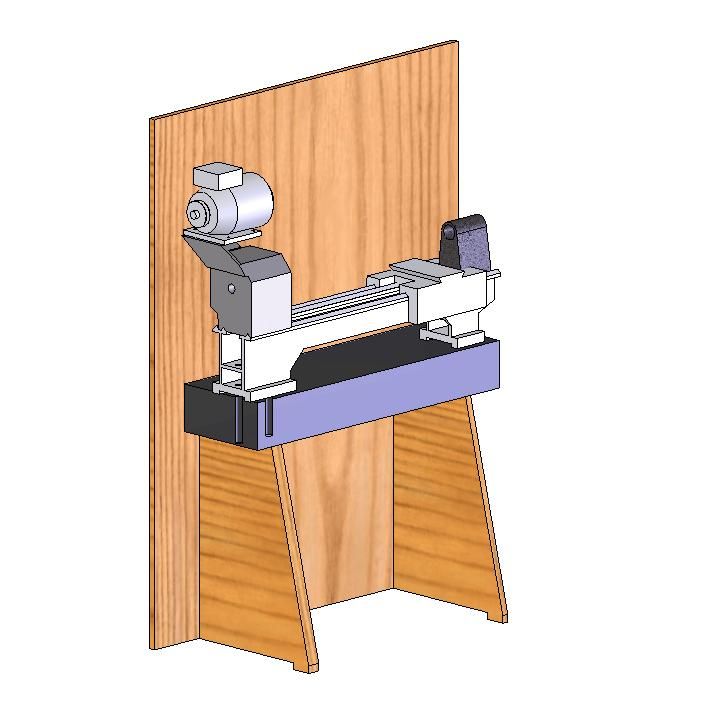I must admit I'd not like to put a tonne on that Sealy table even if evenly distributed, but it's probably stronger than it looks.
It is better used as an assembly or marking-out bench, or for electrical work, than for mounting a heavy machine-tool, though one of the "micro-lathes" would all right on it if with some ribs added below the machine's footprint to take much of the load.
A quarter-tonne lathe would be unfair because it is not evenly-distributed; though you could mount the lathe on two channel-steel longitudinal rails the full length of the table. Doing so would raise the machine's height above the floor so then you need think "ergonomics"!
SO…. keep that bench for the work it is fine for, and make the lathe bench, the right size – including height for you operating it.
.
The wall thickness is too thin. Is it?
Look at how it "works".
It might be only 1mm in an item like that, but strength of a structure depends more on how the metal is used than how thick it is. Your bench members do not need be more than 1/8" (or more likely 3mm stock) thick: it is the area of steel, and its distribution with respect to the applied load and its direction, that do the work.
You can make a very substantial bench for your lathe from 40 X 40 or 50 X 50mm square, 2 or 3mm wall-thickness, box-section and 30 X 30 X 3mm angle. You want rigidity and vibration-damping as much as simple load-bearing.
You can bolt the box-sections together by overlapping, though that looks crude. Or use butt-joints with a heavy-duty steel angle-bracket on each side, bolted through with M10 bolts and "Nyloc" nuts. Brace the corners' outer faces with triangular 2mm – even 1mm – plate gussets bolted through with M8 bolts and "Nyloc" nuts.
If you put one each side of the box-section, those 1mm thick galvanised triangles sold as building components would probably be sufficiently strong corner braces, but their holes might not open safely to accommodate even M8 fastenings so would need M6. They are not the primary joining-parts, nor would they take much lateral load, but used judiciously they act in tension.
I have used heavy-duty galvanised steel L-brackets and those triangles, from e.g. 'Toolstation' for such engineering in metal and wood. They are building not mechanical-engineering parts, but seem fine if you don't mind the rather "building-site" look and remember some are not quite as squarely bent as you'd want.
Include cross-members of the same box-section in the top frame, their top surfaces flush with the rest, to take the weight of the lathe below the headstock and the tail feet.
For a splashback taking little or no extra load, you could extend the uprights, or you simply add a frame made from 25 x 25 x 1mm square tube to which the sheet material is held by self-tapping screws.
Use the angle-section for diagonal braces on the end-frames, and for horizontal rails to hold shelves or cupboards.
.
You could go all-angle – I would suggest heavier section because L-angle is inherently less rigid than box-section, size for size. Perhaps 50 x 50 x 5 or even 6mm, 'L' . Again, it's how you use the metal more than its size that counts.
Finally….
– Think about how to stand the whole lot on the floor so all four corners share the load: levelling feet, for example; or bolt it down with shims as required?
– The bench top: Remember that wood, in bulk plank or some composite form, is not best for supporting a machine-tool as it can warp. You can use it as a surround, if the lathe and its chip-tray are bolted through it to the steelwork in such a way that the wood is not really supporting it.
Howard Lewis.






